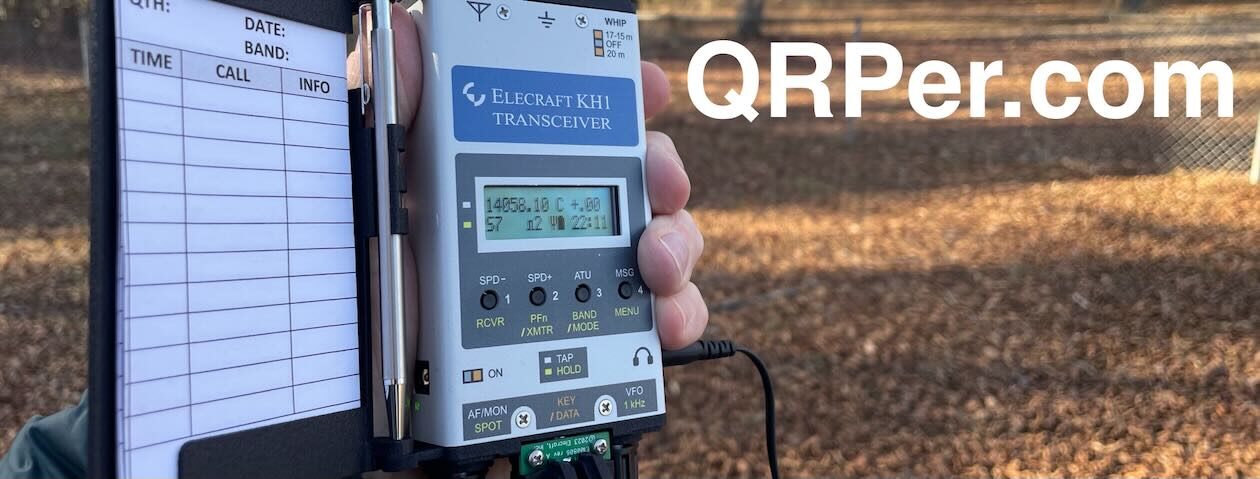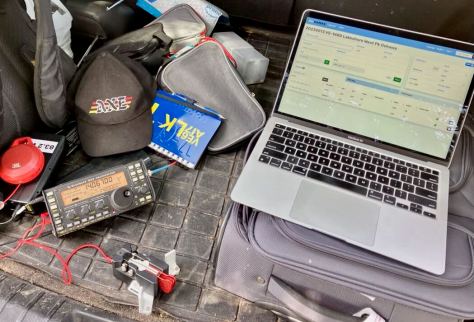On Thursday, April 27, 2023, it was pouring rain, so the perfect time for a little POTA, right–?
Right!
Actually, I had an idea: in the past, I’ve been known to play POTA under the roof of a picnic shelter on rainy days. I’ve even been known to use my AX1 antenna inside the shelter, under a metal roof. Quite a few times, actually.
Of course, it’s not optimal to operate with your antenna under a metal roof, but with POTA? Let’s just say that you can get away with a lot of less-than-optimal antenna deployments.
That’s the benefit of being the DX!
The MC-750 Tripod
An in-the-shelter activation was also the perfect opportunity to test the new Chelegance tripod that fits both the MC-750 and the JPC-12.
A number of readers have reached out asking about this tripod, so when Jesse at Chelegance asked if I’d like to test it, I agreed to do so.
To be clear, he sent this to me at no cost for evaluation. It’s actually quite affordable ($30 on the Chelegance website, $40 at DX Engineering, for example) so purchasing it would have been easy enough, but Jesse also wanted me to evaluate their new FT-818 ATU, so he sent both at the same time (you’ll see the ATU in a future field report).
The tripod feels very sturdy and is simple to deploy. It’s also a little heavy, so keep that in mind if you plan to pack it in for a long SOTA hike.
A number of you have purchased this tripod and have only had positive comments. I now see why.
I speak about this in more detail in the activation video below.
Lake Norman State Park (K-2740)
 I decided that it had been too long since I had activated Lake Norman State Park, so I hopped in the car and headed to Troutman, NC! Lake Norman has a number of picnic shelters and covered areas thus a very safe bet.
I decided that it had been too long since I had activated Lake Norman State Park, so I hopped in the car and headed to Troutman, NC! Lake Norman has a number of picnic shelters and covered areas thus a very safe bet.
It was a rainy day so, of course, I pulled into the Lake Norman picnic area only to find one other car there. In fact, by the time I had taken my backpack to the picnic shelter, that other park visitor appeared at a trailhead, hopped in her car, and left.
The picnic shelter sign wasn’t set to “reserved” either, so it looked like I had a green light to claim it for POTA! Continue reading Rainy Day POTA: Setting up the Chelegance MC-750 Vertical Antenna Inside a Picnic Shelter?











































